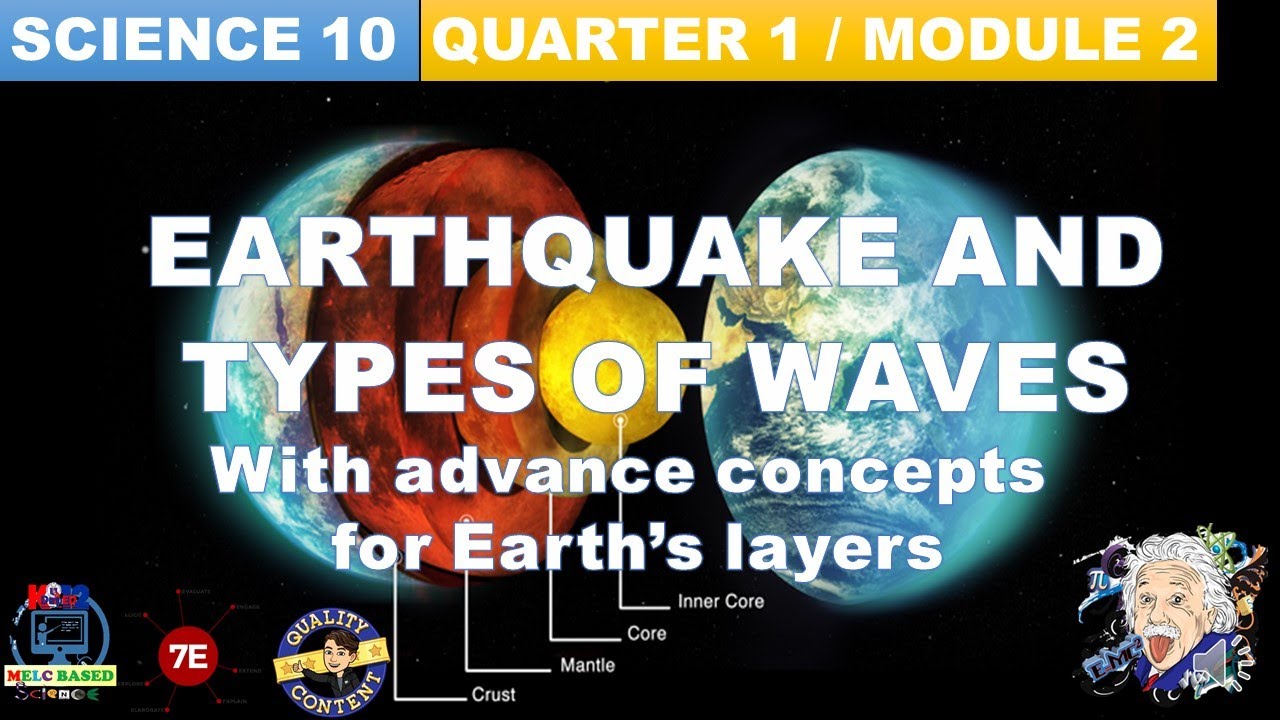The Core of the Earth | 100 Greatest Discoveries
Summary
TLDRIn the late 19th century, British geologist Richard Oldham discovered the Earth's core after noticing seismic waves from an earthquake were deflected, suggesting a dense inner mass. Decades later, Danish seismologist Inge Lehmann identified a second boundary within the core, revealing the Earth has two cores. The inner core, discovered by Lehmann, is a solid iron sphere under immense pressure, while Oldham's outer core is a liquid iron and element mix generating Earth's magnetic field. Together, these cores form a structure larger than Mars, with temperatures at the core's center exceeding the Sun's surface by 2,000 degrees Fahrenheit.
Takeaways
- 🌏 In 19:06, British geologist Richard Oldham discovered the Earth's core while analyzing seismograph readings from a large earthquake.
- 🔍 Oldham noticed that seismic waves did not reach the center of the Earth as expected, indicating the presence of a dense mass that deflected the waves.
- 🎯 This dense mass was identified as the innermost part of the Earth, the core, which was a significant discovery for understanding the Earth's structure.
- 👩🔬 Danish seismologist Inge Lehmann challenged the then-complete picture of the Earth's core in the early 1930s.
- 🌋 Lehmann's analysis of seismic waves from an earthquake revealed a change in velocity, suggesting another boundary within the Earth's core.
- 🌐 She proposed that the Earth has not one but two cores, which was a revolutionary idea at the time.
- 🔧 Modern seismic measurements confirm that the Earth's inner core, discovered by Lehmann, is solid iron, while the outer core, discovered by Oldham, is liquid iron and other elements.
- 🌌 The outer core generates electric currents that create the Earth's magnetic field, which protects the planet from harmful cosmic radiation.
- 🔥 The combined structure of the two cores spans over 4,000 miles in diameter, larger than Mars.
- 🌡️ At the center of the core, temperatures can reach up to 13,000 degrees Fahrenheit, which is hotter than the surface of the Sun.
Q & A
Who was Richard Oldham and what did he discover?
-Richard Oldham was a British geologist who discovered the Earth's core while analyzing seismograph readings from a large earthquake. He noticed that the seismic waves did not travel all the way to the center of the Earth as expected, indicating the presence of a dense mass that deflected the waves.
What was unusual about the seismic waves observed by Richard Oldham?
-The unusual observation was that the seismic waves from the earthquake did not reach the center of the Earth as anticipated. Instead, they appeared to have been deflected by an obstacle, which Oldham identified as the Earth's core.
Who was Inge Lehmann and what was her contribution to the understanding of the Earth's core?
-Inge Lehmann was a Danish seismologist who, through her analysis of seismic waves from earthquakes, discovered that the Earth has not one but two cores. She identified a change in the velocity of the seismic waves as they passed through the Earth's core, suggesting the presence of an inner core.
What is the difference between the Earth's inner core and outer core?
-The Earth's inner core, discovered by Inge Lehmann, is a solid mass of iron and is located at the center of the Earth. It is under immense pressure, approximately three million times the pressure at the Earth's surface. The outer core, discovered by Richard Oldham, is a liquid layer of iron and other elements that surrounds the inner core and generates electric currents, creating the Earth's magnetic field.
What is the composition of the Earth's inner core?
-The Earth's inner core is composed primarily of solid iron, existing under extreme pressure and temperatures that can reach up to 13,000 degrees Fahrenheit.
How does the outer core contribute to the Earth's magnetic field?
-The outer core, being a hot, churning mass of liquid iron and other elements, generates electric currents. These currents, in turn, create the magnetic field that shields the Earth from harmful cosmic radiation.
What is the diameter of the combined structure of the Earth's two cores?
-The combined structure of the Earth's two cores, the inner and outer core, has a diameter of over 4,000 miles, which is slightly larger than the planet Mars.
How does the temperature at the center of the Earth's core compare to the surface of the Sun?
-The temperature at the center of the Earth's core can reach as high as 13,000 degrees Fahrenheit, which is approximately 2,000 degrees hotter than the surface of the Sun.
What role did the seismic waves from earthquakes play in the discovery of the Earth's core?
-Seismic waves from earthquakes were crucial in the discovery of the Earth's core. By analyzing how these waves traveled through the Earth and noting changes in their velocity, scientists like Richard Oldham and Inge Lehmann were able to infer the existence and properties of the Earth's core.
What was the significance of Oldham's and Lehmann's discoveries regarding the Earth's core?
-The discoveries by Oldham and Lehmann were significant as they revolutionized our understanding of the Earth's interior structure. Their findings laid the groundwork for further geological research and helped explain phenomena such as the Earth's magnetic field.
Outlines

このセクションは有料ユーザー限定です。 アクセスするには、アップグレードをお願いします。
今すぐアップグレードMindmap

このセクションは有料ユーザー限定です。 アクセスするには、アップグレードをお願いします。
今すぐアップグレードKeywords

このセクションは有料ユーザー限定です。 アクセスするには、アップグレードをお願いします。
今すぐアップグレードHighlights

このセクションは有料ユーザー限定です。 アクセスするには、アップグレードをお願いします。
今すぐアップグレードTranscripts

このセクションは有料ユーザー限定です。 アクセスするには、アップグレードをお願いします。
今すぐアップグレード関連動画をさらに表示

Earth Science: Lecture 10 - Earth's Interior

Seismic Waves: On Exploring Earth's Interior

Basic Geophysics: Body Waves

Internal Structure of the Earth | World Physical Geography | Geomorphology| Dr. Krishnanand

ETULAY SCIENCE8 Q2 WEEK 3: Earthquake Waves

GRADE 10 SCIENCE QUARTER 1, MODULE 2 WEEK 2, EARTHQUAKE AND TYPES OF WAVES MELC BASED.
5.0 / 5 (0 votes)
